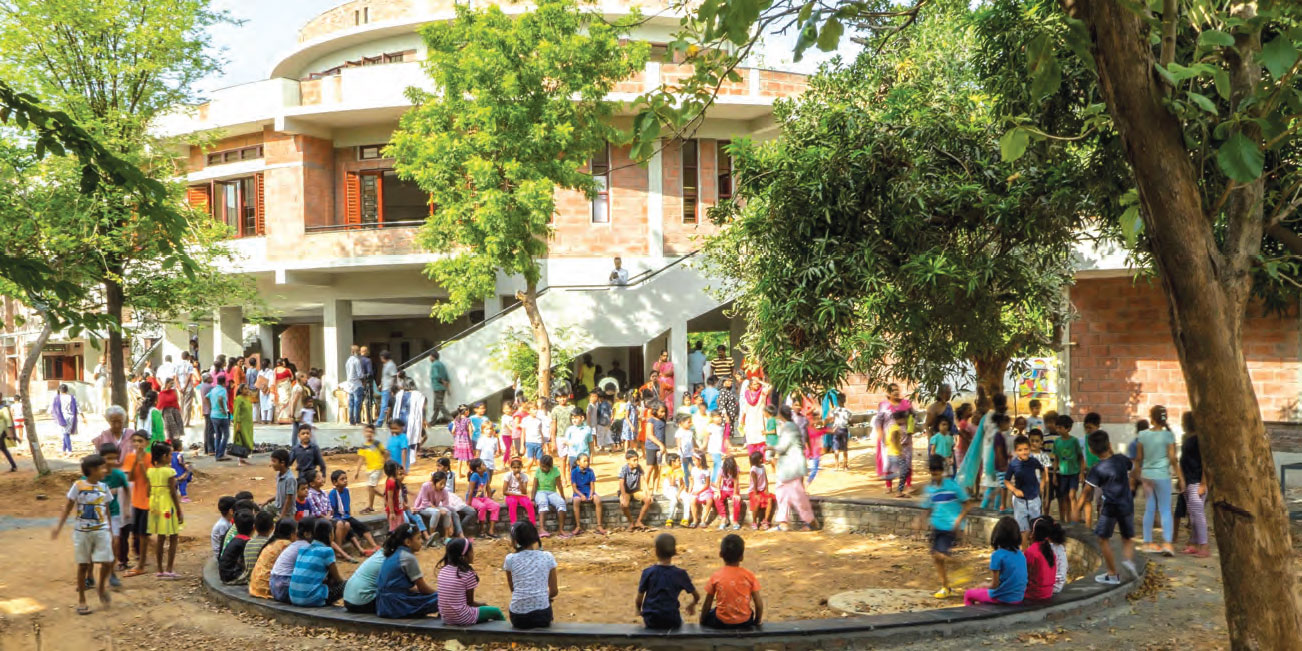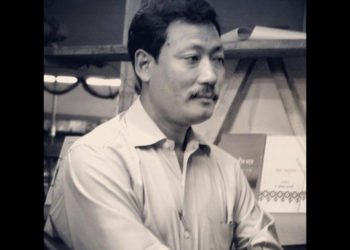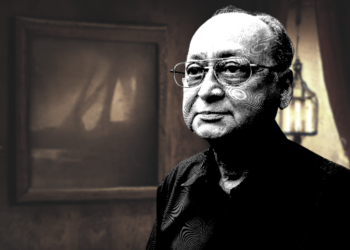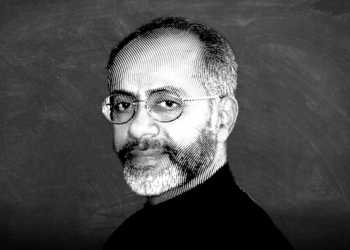The following is an open response from some of the alumni of The School KFI, Chennai to the essay on casteism in Krishnamurti schools.

This is in response to an article that has been published about the “casteist underbelly” in Krishnamurti schools. We write this as a single voice from some of the members of the class of 1993 after quite a few days of discussion and debate amongst ourselves.
While some of us past students are also parents of students in The School in Chennai, one of us has also worked there as a member of the ‘non-teaching’ staff for quite many years. Since the last 28 years after leaving school, most of us have also remained actively engaged with and invested in our alma mater and are connected with its ethos, philosophy and principles and the daily life in school.
As a batch, we come from diverse backgrounds – social, religious and economic and it is also to be noted that this, our response, is not in any manner representative of the school’s views and should be viewed entirely as our very own, formed through an association with the institution, through 35 to 40 years from childhood to our lives today, as reasonable, aware adults. It is indeed important to note here that the school has been one of the single biggest influences on our world view and attitudes that we carry to this day.
What we have to say is devoid of hearsay, generalizations, speculation or suppositions and comes from our personal experiences of the school.
We recognise the fact that every individual has his or her own unique experience of the world. We acknowledge that every single person has the right to form personal opinions and take a standpoint. The author, whom we believe is a recent alumna of the school, has put forward her perspectives and inferences, and this prompted us to go back to our experience of the school, to explore it for systemic and hegemonic fault-lines that could be indicators of deeper discrimination based on caste, religion or other social or economic imbalances. This is what we note.
One of the biggest issues in the author’s article seems to revolve around the dining table and the food that is served on it. Perhaps a deeper examination of the food itself, the daily efforts of the Akkas and Annas working in the kitchen and what happens beyond catering to the schools’s own requirements may point her to a different conclusion.
We often felt that what underlined the school’s approach to many things, especially food, was an abiding tenet of simplicity. This also points to what is offered, how it is offered and our responsibilities here.
We always sat in mixed groups of students from different classes alongside a staff member or two. We were encouraged to get to know one another and to continue the learning and sharing of thoughts and ideas with peers, older students and younger ones, in a community space without distinctions. We served each other, ate together and rose from the table only when all of us were done. We finally washed and dried our own plates and stacked them before we dispersed.
Further, as we examine the menu itself, let us keep in mind the practical, daily going involved. The school kitchen caters breakfast, lunch and an afternoon snack to 450-500 students and staff on a daily basis, three meals a day – and that is a mammoth task, in terms of logistics, especially when it is a school and kids are involved.
The food is simple, nutritious and attempts to be balanced in a manner that does not work against ‘wholesome consumption’ by the students. While junior school has an entirely different breakfast and lunch menu with lower spice quotient, the staff, middle and senior school students are provided a meal that keeps in line with their more resilient and exploratory taste buds.
Yes, the food is vegetarian, but as students, while some of the food hasn’t been to our liking (pineapple rasam was one such dish and has now been thankfully deleted from the menu) most of it has been delicious and keeping in line with high energy kids that need the right kind of nourishment. Over the years, the menus have changed and evolved (curd rice is not a daily constituent today) and garlic and onion are definitely not avoided when these are needed to enhance the flavour of a dish.
In over 35 years that we’ve eaten at the school (and we still do, whenever we visit the campus as alumni) there has not been one case of an upset tummy or poor hygiene – vegetarian cooking is easier to keep under control from a purely logistics perspective. The lack of a non-vegetarian diet is not to be misconstrued as a means to impose a Savarna ideology of ‘purity’ as the author states, but more in keeping with the need for a well-oiled system that does not need to be revisited unnecessarily. Furthermore the school, in our personal experience, has never dictated what we can eat in our homes or in our time outside of the campus. We also fondly remember the fun we had once a term, cooking for the rest of the school in turns.
At this point of the discussion, we’d also like to step back a bit and look at the discussion from a different perspective. All of this is not what is evident openly, and the school rarely talks of its own efforts. But we think, as a group of concerned fellow students, that it is now time to highlight some matters that many students, past and present, may not be privy to.
The School has a long history, from the time we were children, and probably earlier, of onboarding students on the basis of part- or full-scholarship, all of them from socially or economically disadvantaged backgrounds. Some of our classmates, we find only now during our discussions, were on similar part- or full scholarships for many years.
We were therefore a very diverse blend as a class, but never felt a divide, and unlike what popular legends and myths would like to tell you, this is not an elitist school for the ‘upward’ castes or classes, but one that treats all children equally. As students, we were all actively sensitized to inequality issues around wearing branded or monogrammed clothing and were encouraged to keep it simple and without expensive showboating. We believe that this remains the case, even today.
We were also encouraged to go barefoot at times to experience the earth, to walk in the first rain of monsoons, to learn under the trees and to play as often as we could. We have spent weekends cleaning the school pond after a cyclone or just stayed overnight at school to use the telescope or commandeered the space when we had a bee in our bonnets to do something. The staff of school has always indulged us and allowed us to learn beyond the classroom.
We have seen the school also ensures, as part of its philosophy, that refreshments like tea and biscuits or fruit, besides lunch and breakfast is provided to any and all external contractors or daily wage workers that may be on campus, on any given day. This is the very same food that the students and staff eat.
In addition, on a daily basis, a number of people from disadvantaged sections of society – from Nari Kuravas (who rummage in solid waste dumps nearby to eke out a very bare living) to poor migrant labourers working on nearby construction sites not connected to the school, an orphanage, and villagers from a Dalit community in the neighbourhood are encouraged to visit our campus and are provided this same wholesome, nutritious food that they might otherwise find difficult to obtain.
For those who cannot afford the vessels to carry away their food, the school has also purchased and provided these for their personal use, and one of our very own classmates was a part of this process for some years. Between 30-50 people are served this way on a daily basis, depending on what their requirements are and they are encouraged to call in advance and let the school know of any variations, primarily to avoid food wastage.
The school always encouraged us to look beyond divisions based on caste, class, age or stature. In fact, as a group of students thrown together in the same school, none of us even knew of each other’s religions or social differences outside of the school space. Even though we visited each other in their homes, it never occurred to question the differences we experienced there, and we found joy in the diversity.
We were also never stopped from questioning things that we disagreed with, be it a teacher or even the head of the school. Class discussions, small groups discussions and even Friday afternoon assemblies could be used by students and teachers alike to share our ideas and concerns. The aim of the school has also always been to push the boundaries of education, to make it relevant in the development of socially aware teens and adults. This is ingrained in the culture of the school, and has evolved but not fundamentally changed since its inception. We were always pushed to indulge in introspection and self enquiry. The space for expression was one of openness, honesty and lack of judgement. It allowed us all the freedom to be and grow in our own individual ways, even as we were taught to balance the needs of the collective.
K-schools have stood out for their willingness to challenge pedagogy – in our school for instance, we’ve seen it in the freedom we had to study whatever subject combination we wanted in grades 11-12 (several of us chose to go with that). And later on, we’ve had mixed age classrooms, one-subject-a-day immersions and most recently, with online classes thrice a week and allowing independent work on other days.
Very importantly, when it comes to ‘non teaching’ staff, they were, and always will remain ‘Akka’ or ‘Anna’ to us, as were the teaching staff. We never knew that we were or are meant to look down upon them, and were encouraged to learn from them and acknowledge them for their contributions towards our welfare and wellbeing as a school. In fact we never experienced overt hierarchy when dealing with the adults at the school and so never really had to ask ‘what is this person’s role here?’
With the way the world is going today, it is absolutely vital to examine casteism, systemic racism and inequities, latent or overtly held hierarchical attitudes, institutional blind spots; and what better place to hold such discussions than an institution that wants to learn, debate and include?
We are therefore extremely happy that the author has raised relevant concerns borne out of her observations, and hope that this note from us, coming from our own observations as a collective of fellow students, parents and staff, serves to answer her questions and sets her mind at ease about the intent of the school, with perhaps a broader perspective of the schools unpublicized efforts being brought to the discussion today.
Let us also keep in mind that when a philosophy and an ideology are translated into a working institution, it often becomes a space that engenders a homogeneity in approach or focus or even attitudes. What saves it from parochialism and hopefully fosters sustainability, is a spirit of enquiry, an ability to self reflect and a willingness to learn.
Let us hope this moment allows us to look at the world as a whole and examine the constant push to divisiveness and how to bring us closer to growth instead of rot.
From members of the batch of 1993, The School KFI, Chennai:
Ahalya Ananth, Arjun Madhusudhan, Dhanalaxmi Kandappah, Kartik Kumar, Kartik Parija, Madhumathi Ravi, Niranjan DV, Param Natarajan, Priya Sridhar, Rasika Umamahesh, Sandeep Menon, Shireen Sherif, Siddharth Rajkumar, Shobha Venkataraman




